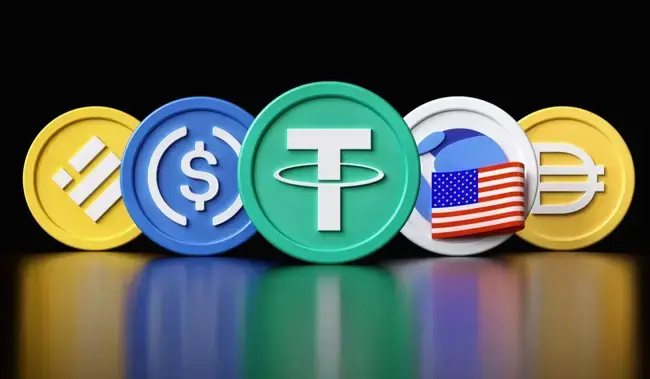Highlights:
- Coinbase says stablecoins are mainly used globally, not threatening U.S. banks or lending.
- Coinbase policy chief said most users are outside the U.S. using stablecoins for safety.
- The firm said banks can use stablecoins to make their services better.
Coinbase researchers said that fears about stablecoins hurting U.S. banks are exaggerated. They noted that these digital tokens mainly cater to users abroad instead of challenging domestic banking. On Wednesday, Coinbase policy chief Faryar Shirzad said claims that these coins could harm bank lending are false. He pointed out that most stablecoin activity comes from outside the United States.
Coinbase Says Global Dollar Demand Remains Strong
According to Shirzad, the demand largely supports global dollar use rather than competing with local banks. In many regions with unstable local currencies, these tokens provide an easy way for people to access dollars.
Coinbase argued in a note that concerns about stablecoins impacting bank deposits are similar to past worries about money market funds, but don’t reflect actual usage. The note added, “Yet they fail to account for how and where stablecoins are actually used.” Coinbase said these coins mainly help people outside the US, not local banks. People in some countries use them to keep their money safe from weak local currencies. Most transfers happen on blockchain or decentralized finance platforms, working with regular banks.
Shirzad said stablecoins are useful. “Treating stablecoins as a threat misreads the moment: they strengthen the dollar’s global role and unlock competitive advantages that the US shouldn’t constrain,” he added.
The "stablecoins will destroy bank lending" narrative ignores reality. U.S. banks are sitting on trillions in reserves—they have plenty of liquidity. Meanwhile, most stablecoin demand comes from outside the U.S., expanding dollar dominance globally, not competing with your local… pic.twitter.com/3wCOEm6Zr0
— Faryar Shirzad 🛡️ (@faryarshirzad) October 29, 2025
US banks have warned that these digital coins giving interest could compete with bank accounts and cause money to leave. They asked Congress to regulate these services, but Coinbase says the risk to US banks is likely overstated. Coinbase said community banks face little risk from stablecoins. Shirzad said banks and stablecoin users rarely overlap. He added that banks could improve services by using stablecoins.
The company warned not to overestimate stablecoin growth. Even if $5 trillion circulates in ten years, most will stay abroad or in digital systems. Very little would come from US bank accounts. US commercial bank deposits are over $18 trillion. Coinbase said stablecoins would have little effect on these deposits but could increase the US dollar’s global reach.
Banks Are Adopting Stablecoins
After the GENIUS Act passed earlier this year, many major banks and financial firms have started or are considering stablecoin projects. Coinbase research shows these moves reflect wider acceptance and integration, not a threat to regular banking. It also points out a gap between global demand and the US banking impact. Stablecoins help spread the dollar internationally while causing little disruption to domestic banks.
In other stablecoin news, South Korea’s BDACS is launching a won-backed token, KRW1, on Circle’s new Arc network. The Busan-based company signed an agreement with Circle to create and release the digital won. The project aims to link South Korea’s financial innovation with the global stablecoin market.
Best Crypto Exchange
- Over 90 top cryptos to trade
- Regulated by top-tier entities
- User-friendly trading app
- 30+ million users
eToro is a multi-asset investment platform. The value of your investments may go up or down. Your capital is at risk. Don’t invest unless you’re prepared to lose all the money you invest. This is a high-risk investment, and you should not expect to be protected if something goes wrong.






